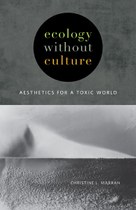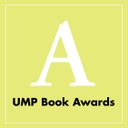ASAP Journal: Ecology without Culture
 Its agile survey of ecocritical responses to toxicity notwithstanding, Christine L. Marran’s Ecology without Culture: Aesthetics for a Toxic World (2017) levels most of its lasting claims in relation to the arts of the present. Her book examines a fascinating archive of Asian literature and film, with Marran bridging genres and media by way of a meticulous critical terminology she develops throughout her text.1 The close readings that emerge alongside Marran’s concepts of “obligate storytelling” and “optics of ambulation” are the most compelling aspect of the book—so much so that one wonders if Ecology without Culture sometimes buries its lede. Given Marran’s subtle analyses of those touchstones that have come to define contemporary Asian aesthetics—from Tsuchimoto Noriaki’s 1971 Minamatä Medical Films to Wu Ming-yi’s 2014 novel Man with the Compound Eyes—the book’s self-proclaimed intervention within the tired nature/culture binary feels somewhat less urgent. This is by no means intended to suggest that the discussions of aesthetics, modes of storytelling, or optic patterns do not bear upon ecological thinking. Rather, Marran’s direct treatment of toxic aesthetics represents a far more urgent intervention in the study of literature than the book’s largely summative accounts of ecocriticism and ecopolitics. In the end, Ecology without Culture marks a necessary departure from the familiar ecocritical reading praxis, forecasting where the field of “environmental humanities” might direct future inquiry: namely, toward a toxic aesthetics that characterizes the meeting point of cultural humanism and a newfound regard for the material world that supports and makes possible that humanism.
Its agile survey of ecocritical responses to toxicity notwithstanding, Christine L. Marran’s Ecology without Culture: Aesthetics for a Toxic World (2017) levels most of its lasting claims in relation to the arts of the present. Her book examines a fascinating archive of Asian literature and film, with Marran bridging genres and media by way of a meticulous critical terminology she develops throughout her text.1 The close readings that emerge alongside Marran’s concepts of “obligate storytelling” and “optics of ambulation” are the most compelling aspect of the book—so much so that one wonders if Ecology without Culture sometimes buries its lede. Given Marran’s subtle analyses of those touchstones that have come to define contemporary Asian aesthetics—from Tsuchimoto Noriaki’s 1971 Minamatä Medical Films to Wu Ming-yi’s 2014 novel Man with the Compound Eyes—the book’s self-proclaimed intervention within the tired nature/culture binary feels somewhat less urgent. This is by no means intended to suggest that the discussions of aesthetics, modes of storytelling, or optic patterns do not bear upon ecological thinking. Rather, Marran’s direct treatment of toxic aesthetics represents a far more urgent intervention in the study of literature than the book’s largely summative accounts of ecocriticism and ecopolitics. In the end, Ecology without Culture marks a necessary departure from the familiar ecocritical reading praxis, forecasting where the field of “environmental humanities” might direct future inquiry: namely, toward a toxic aesthetics that characterizes the meeting point of cultural humanism and a newfound regard for the material world that supports and makes possible that humanism.
By: Clint Wilson III
Story Date: 2018-03-29T05:00:00+00:00



